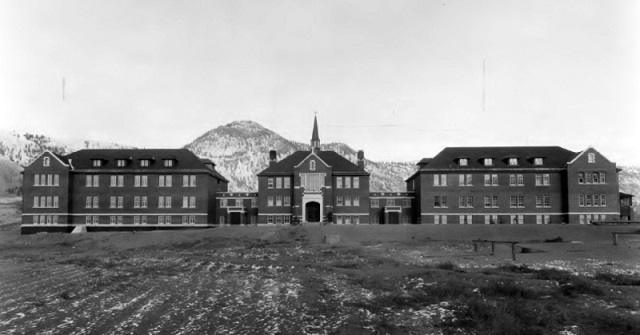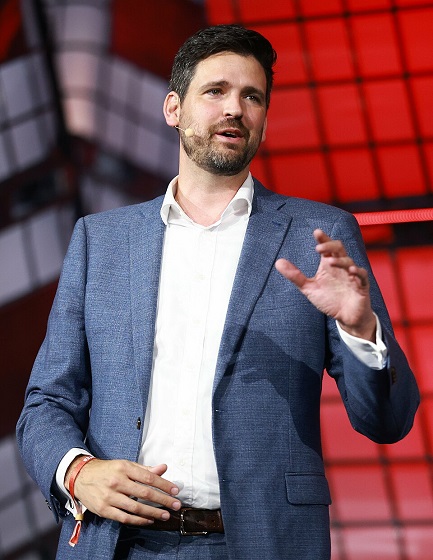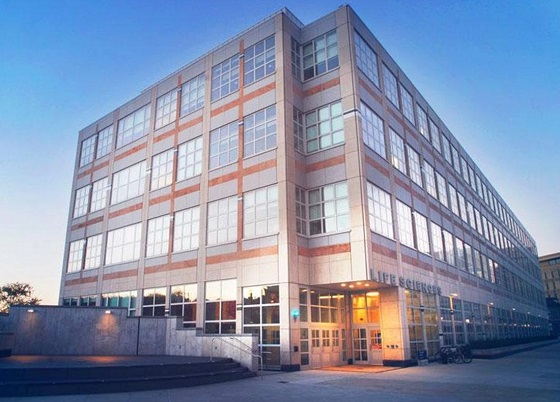Frontier Centre for Public Policy
A letter to five Canadian Churches

From the Frontier Centre for Public Policy
Two years ago, Eric Metaxas, the conservative Christian American author wrote a short, but important, book addressing the American Church. He was concerned the churches were forsaking their Christian principles in not speaking out against the anti-Christian ideologies and practices occurring throughout the U.S.
My letter is limited to admonishing the Canadian churches involved with Canada’s Indian Residential Schools. These churches have not spoken out in support of the missionaries they commissioned to work in these schools, people who poured their lives into their work, and who have been wrongly accused of abusing and murdering residential school children.
Obviously, those employees who are guilty should be condemned and punished, but those who are innocent should not be falsely accused of perpetrating horrific crimes.
Between 1883 and 1996, there were 143 Indian Residential Schools included in the Indian Residential Schools Settlement Agreement, a complex agreement between various Indigenous groups, the federal government, and the churches that managed residential schools.
The Roman Catholic Church managed 62 (43.4%) of the schools, the Church of England (Anglican) managed 35 (24.5%), the United Church (including the denominations that joined together in 1925) managed 19 (13.3%), the Mennonite Church managed 3 (2.1%), and the Baptist Church managed 1 (0.6%) residential school. The federal and territorial governments managed the remaining 23 (16.1%) schools.
There are four historical points to be reviewed.
First, in May 2021, Rosanne Casimer, Chief of the Kamloops Band, announced that ground penetrating radar (GPR) had found 215 unmarked graves of children in the residential schoolyard.
Surprisingly, this was the first public report suggesting that children buried in residential schoolyards had been murdered. There is, however, no credible evidence of murdered residential school children in the 3,500-page Truth and Reconciliation Commission (TRC) Report which was published 6 years earlier.
Second, despite being absent from the TRC’s “Calls to Action,” the federal government has awarded almost $8 million to the Kamloops band to excavate part of the schoolyard, and set aside over $300 million for other bands to search for soil anomalies or presumed graves.
Third, as expected with such strong incentives, many other bands have claimed that they too have graves of missing and presumed murdered children buried in the schoolyards on their reserves.
Finally, in an impressive gesture of support, Prime Minister Justin Trudeau knelt beside a grave in a well-known cemetery with a teddy bear in his hand decrying the genocide perpetrated by the churches. Later, he had the Canadian flags at government buildings around the world flown at half-mast for 6 months so that both Canadians and citizens of the world would mourn this Canadian tragedy.
Since the spring of 2021, almost 100 Christian churches have been vandalized, desecrated, or set on fire, supposedly because of the “genocide” that had taken place at the sites of Indian Residential Schools. Sadly, some of these churches, the Lutheran and Orthodox churches, for example, did not manage any of the schools.
No doubt, most Canadians are thankful there is no forensic evidence that children have been murdered and buried in schoolyards. Of course, there are children’s bodies in parish cemeteries that are often close to the schools, but most of them died of communicable diseases like influenza and TB, and they have been given proper funerals.
My concern is that over the last three years, the five churches that managed Indian Residential Schools have said little or nothing to defend themselves or the staff they commissioned to work in the schools.
In a time of need, both Indigenous and non-Indigenous Christians stepped forward to care for children living in residential schools. But the churches have not stepped forward to defend their staff in their time of need. These people are getting old, and they need support now. Instead, the churches have abandoned, or worse, condemned their faithful employees for abusing children.
Equally surprising, no church leader has supported the fundamental principle of Canadian law: individuals (and churches) are considered innocent until they are proven guilty.
It grieves me, and the few other living residential school employees, that our churches have not publically supported their innocent employees. Surely, they have a moral obligation to ensure that truth and justice prevail.
Eric Metaxas has tried to awaken American churches by pointing out where they have gone wrong. Should we not try to awaken Canadian churches to defend their involvement in Indian residential schools?
Is it too much to suggest that the church leaders think back to lessons learned from Martin Luther King Jr. and Dietrich Bonhoeffer who stood up for Christian principles against the evil practice of dehumanizing people—Blacks in the U.S. and Jews in Europe?
Not only will these churches be judged by the moral and ethical lessons they preach, but, more importantly, by the principles they live by. Canadians will see the true values of church leaders in their actions, especially concerning those they commissioned to work in their schools.
Rodney A. Clifton lived for 4 months in Old Sun, the Anglican residential school on the Siksika (Blackfoot) First Nation during the summer of 1966, and he was the Senior Boys’ Supervisor in Stringer Hall, the Anglican residential hostel in Inuvik during the 1966-67 school year. He is a Professor Emeritus at the University of Manitoba and a senior fellow at the Frontier Centre for Public Policy. His most recent book, with Mark DeWolf, is From Truth Comes Reconciliation: An Assessment of the Truth and Reconciliation Commission Report. The book will be out on November 5, and it can be preordered from the publisher.
Rodney A. Clifton is a professor emeritus at the University of Manitoba and a Senior Fellow at the Frontier Centre for Public Policy. He lived for four months in Old Sun, the Anglican Residential School on the Blackfoot (Siksika) First Nation, and was the Senior Boys’ Supervisor in Stringer Hall, the Anglican residence in Inuvik. Rodney Clifton and Mark DeWolf are the editors of From Truth Comes Reconciliation: An Assessment of the Truth and Reconciliation Commission Report (Frontier Centre for Public Policy, 2021). A second and expanded edition of this book will be published in early 2024.
Business
Carney’s Deficit Numbers Deserve Scrutiny After Trudeau’s Forecasting Failures

From the Frontier Centre for Public Policy
By Conrad Eder
Frontier Centre for Public Policy study reveals a decade of inflated Liberal forecasts—a track record that casts a long shadow over Carney’s first budget
The Frontier Centre for Public Policy has released a major new study revealing that the Trudeau government’s federal budget forecasts from 2016 to 2025 were consistently inaccurate and biased — a record that casts serious doubt on the projections in Prime Minister Mark Carney’s first budget.
Carney’s 2025–26 federal budget forecasts a $78.3-billion deficit — twice the size projected last year and four times what was forecast in Budget 2022. But if recent history is any guide, Canadians have good reason to question whether even this ballooning deficit reflects fiscal reality.
The 4,000-word study, Measuring Federal Budgetary Balance Forecasting Accuracy and Bias, by Frontier Centre policy analyst Conrad Eder, finds that forecast accuracy collapsed after the Trudeau government took office:
- Current-year forecasts were off by an average of $22.9 billion, or one per cent of GDP.
- Four-year forecasts missed the mark by an average of $94.4 billion, or four per cent of GDP.
- Long-term projections consistently overstated Canada’s fiscal health, showing a clear optimism bias.
Eder’s analysis shows that every three- and four-year forecast under Trudeau predicted a stronger financial position than what actually occurred, masking the true scale of deficits and debt accumulation. The study concludes that this reflects a systemic optimism bias, likely rooted in political incentives: short-term optics with no regard to long-term consequences.
“With Prime Minister Carney now setting Canada’s fiscal direction, it’s critical to assess his projections in light of this track record,” said Eder. “The pattern of bias and inaccuracy under previous Liberal governments gives reason to doubt the credibility of claims that deficits will shrink over time. Canadians deserve fiscal forecasts that are credible and transparent — not political messaging disguised as economic planning.”
The study warns that persistent optimism bias erodes fiscal accountability, weakens public trust and limits citizens’ ability to hold government to account — a threat to both economic sustainability and democratic transparency.
Business
Capital Flight Signals No Confidence In Carney’s Agenda

From the Frontier Centre for Public Policy
By Jay Goldberg
Between bad trade calls and looming deficits, Canada is driving money out just when it needs it most
Canadians voted for relative continuity in April, but investors voted with their wallets, moving $124 billion out of the country.
According to the National Bank, Canadian investors purchased approximately $124 billion in American securities between February and July of this year. At the same time, foreign investment in Canada dropped sharply, leaving the country with a serious hole in its capital base.
As Warren Lovely of National Bank put it, “with non-resident investors aloof and Canadians adding foreign assets, the country has suffered a major capital drain”—one he called “unprecedented.”
Why is this happening?
One reason is trade. Canada adopted one of the most aggressive responses to U.S. President Donald Trump’s tariff agenda. Former prime minister Justin Trudeau imposed retaliatory tariffs on the United States and escalated tensions further by targeting goods covered under the Canada–United States–Mexico Agreement (CUSMA), something even the Trump administration avoided.
The result was punishing. Washington slapped a 35 per cent tariff on non-CUSMA Canadian goods, far higher than the 25 per cent rate applied to Mexico. That made Canadian exports less competitive and unattractive to U.S. consumers. The effects rippled through industries like autos, agriculture and steel, sectors that rely heavily on access to U.S. markets. Canadian producers suddenly found themselves priced out, and investors took note.
Recognizing the damage, Prime Minister Mark Carney rolled back all retaliatory tariffs on CUSMA-covered goods this summer in hopes of cooling tensions. Yet the 35 per cent tariff on non-CUSMA Canadian exports remains, among the highest the U.S. applies to any trading partner.
Investors saw the writing on the wall. They understood Trudeau’s strategy had soured relations with Trump and that, given Canada’s reliance on U.S. trade, the United States would inevitably come out on top. Parking capital in U.S. securities looked far safer than betting on Canada’s economy under a government playing a weak hand.
The trade story alone explains much of the exodus, but fiscal policy is another concern. Interim Parliamentary Budget Officer Jason Jacques recently called Ottawa’s approach “stupefying” and warned that Canada risks a 1990s-style fiscal crisis if spending isn’t brought under control. During the 1990s, ballooning deficits forced deep program cuts and painful tax hikes. Interest rates soared, Canada’s debt was downgraded and Ottawa nearly lost control of its finances. Investors are seeing warning signs that history could repeat itself.
After months of delay, Canadians finally saw a federal budget on Nov. 4. Jacques had already projected a deficit of $68.5 billion when he warned the outlook was “unsustainable.” National Bank now suggests the shortfall could exceed $100 billion. And that doesn’t include Carney’s campaign promises, such as higher defence spending, which could add tens of billions more.
Deficits of that scale matter. They can drive up borrowing costs, leave less room for social spending and undermine confidence in the country’s long-term fiscal stability. For investors managing pensions, RRSPs or business portfolios, Canada’s balance sheet now looks shaky compared to a U.S. economy offering both scale and relative stability.
Add in high taxes, heavy regulation and interprovincial trade barriers, and the picture grows bleaker. Despite decades of promises, barriers between provinces still make it difficult for Canadian businesses to trade freely within their own country. From differing trucking regulations to restrictions on alcohol distribution, these long-standing inefficiencies eat away at productivity. When combined with federal tax and regulatory burdens, the environment for growth becomes even more hostile.
The Carney government needs to take this unprecedented capital drain seriously. Investors are not acting on a whim. They are responding to structural problems—ill-advised trade actions, runaway federal spending and persistent barriers to growth—that Ottawa has yet to fix.
In the short term, that means striking a deal with Washington to lower tariffs and restore confidence that Canada can maintain stable access to U.S. markets. It also means resisting the urge to spend Canada into deeper deficits when warning lights are already flashing red. Over the long term, Ottawa must finally tackle high taxes, cut red tape and eliminate the bureaucratic obstacles that stand in the way of economic growth.
Capital has choices. Right now, it is voting with its feet, and with its dollars, and heading south. If Canada wants that capital to come home, the government will have to earn it back.
Jay Goldberg is a fellow with the Frontier Centre for Public Policy.
-

 COVID-192 days ago
COVID-192 days agoFreedom Convoy leader Tamara Lich to appeal her recent conviction
-

 Justice2 days ago
Justice2 days agoCarney government lets Supreme Court decision stand despite outrage over child porn ruling
-

 espionage1 day ago
espionage1 day agoU.S. Charges Three More Chinese Scholars in Wuhan Bio-Smuggling Case, Citing Pattern of Foreign Exploitation in American Research Labs
-

 Daily Caller2 days ago
Daily Caller2 days agoUN Chief Rages Against Dying Of Climate Alarm Light
-

 Business2 days ago
Business2 days agoCarney’s budget spares tax status of Canadian churches, pro-life groups after backlash
-

 Business1 day ago
Business1 day agoCarney budget doubles down on Trudeau-era policies
-

 COVID-191 day ago
COVID-191 day agoCrown still working to put Lich and Barber in jail
-

 Business24 hours ago
Business24 hours agoCarney budget continues misguided ‘Build Canada Homes’ approach







